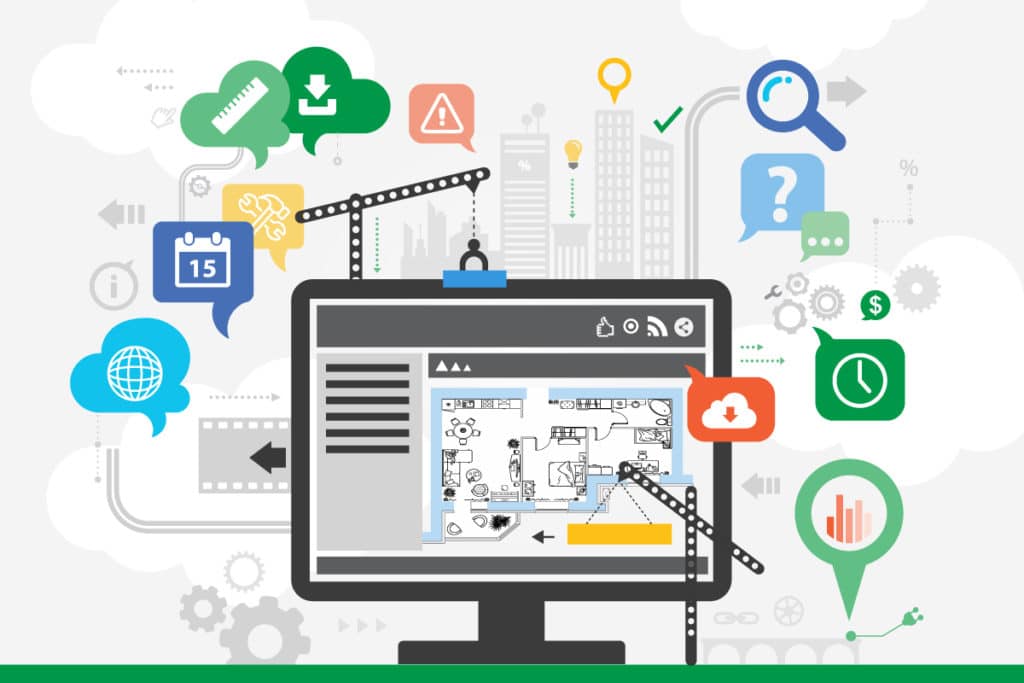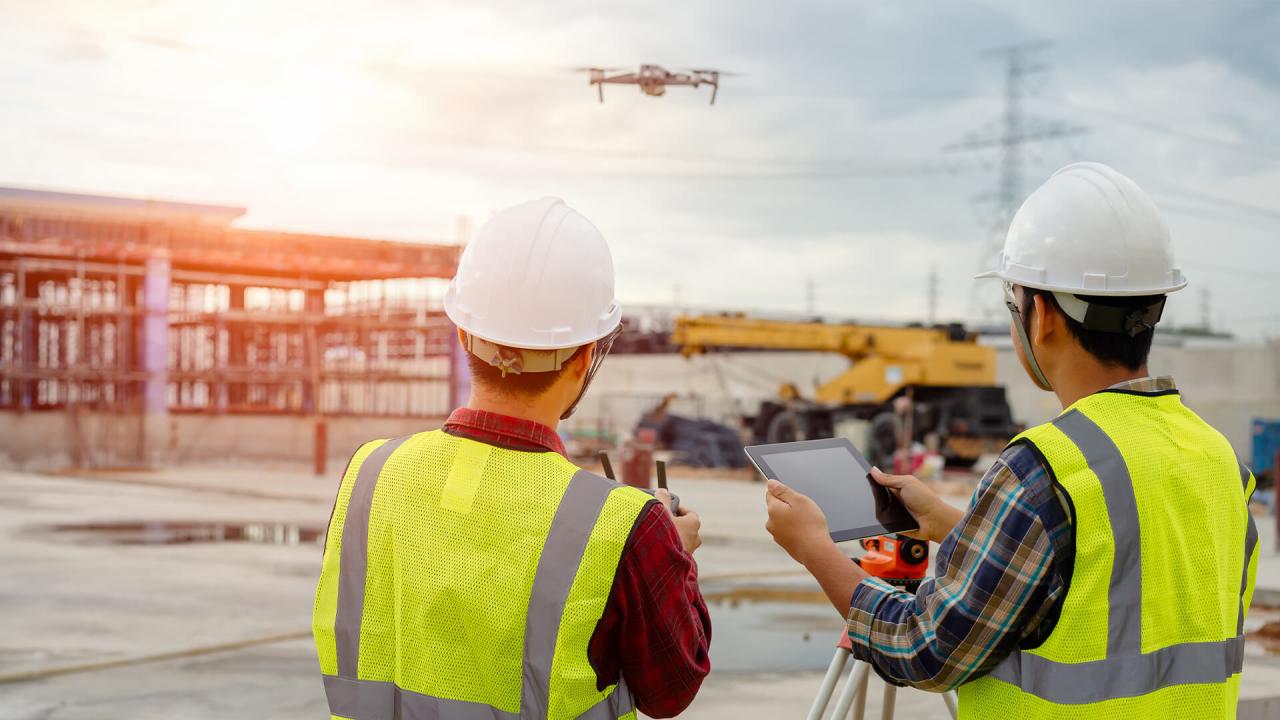Preconstruction Technology: Shaping Modern Construction
Preconstruction technology has revolutionized the way we plan, design, and build structures. Gone are the days of relying solely on traditional methods and blueprints; now, advanced software and tools empower […]

Preconstruction technology has revolutionized the way we plan, design, and build structures. Gone are the days of relying solely on traditional methods and blueprints; now, advanced software and tools empower construction professionals with data-driven insights, improved collaboration, and a more efficient workflow.
From virtual reality simulations to Building Information Modeling (BIM), preconstruction technology plays a pivotal role in minimizing risk, optimizing costs, and ensuring projects are completed on time and within budget. This shift towards technology has transformed the construction industry, paving the way for smarter, more sustainable, and ultimately, more successful projects.
Introduction to Preconstruction Technology
Preconstruction technology encompasses the use of digital tools and processes to optimize the planning, design, and execution phases of construction projects. It plays a crucial role in enhancing project efficiency, reducing costs, and mitigating risks throughout the construction lifecycle.
Preconstruction technology has evolved significantly, driven by advancements in computing power, software development, and data analysis. Early iterations focused on 2D drafting and basic cost estimation, while modern preconstruction technology leverages Building Information Modeling (BIM), virtual reality (VR), and artificial intelligence (AI) to create highly detailed and interactive models of construction projects. This evolution has led to a paradigm shift in the construction industry, enabling stakeholders to visualize and analyze projects in unprecedented detail, facilitating informed decision-making and improving project outcomes.
Preconstruction Technology Tools and Software
Preconstruction technology tools and software are used across various stages of construction, from initial planning to final handover. These tools streamline workflows, enhance collaboration, and provide valuable insights for better decision-making.
- Building Information Modeling (BIM): BIM software creates detailed 3D models of buildings, enabling architects, engineers, and contractors to collaborate effectively, identify potential clashes, and optimize design solutions. BIM facilitates cost estimation, scheduling, and material management, leading to more efficient and accurate project execution.
- Virtual Reality (VR): VR technology allows stakeholders to experience immersive walkthroughs of proposed buildings, enabling them to visualize design concepts, identify potential issues, and make informed decisions before construction begins. VR can enhance communication and collaboration between designers, clients, and construction teams, leading to better project outcomes.
- Artificial Intelligence (AI): AI algorithms can analyze vast datasets to predict project costs, identify potential risks, and optimize resource allocation. AI-powered tools can automate repetitive tasks, freeing up human resources for more strategic activities. AI can also be used to analyze historical project data, identifying patterns and trends that can improve future project planning and execution.
- Project Management Software: Project management software provides tools for task management, scheduling, communication, and resource allocation. These tools enable construction teams to track project progress, manage risks, and communicate effectively with stakeholders. Project management software can also facilitate cost control and improve overall project efficiency.
- Construction Estimating Software: Construction estimating software automates the process of calculating project costs, considering factors such as labor, materials, and equipment. These tools provide accurate cost estimates, helping contractors to bid competitively and manage project budgets effectively. Construction estimating software can also help identify potential cost overruns and optimize resource allocation.
Types of Preconstruction Technology

Preconstruction technology encompasses a range of tools and software designed to optimize the planning, design, and execution phases of construction projects. These technologies streamline processes, enhance collaboration, and improve decision-making throughout the preconstruction lifecycle.
Building Information Modeling (BIM)
BIM software is a powerful tool that creates a digital representation of a building project, enabling architects, engineers, and contractors to collaborate in real-time. It allows for detailed modeling of structures, systems, and components, facilitating accurate cost estimations, material procurement, and construction scheduling.
Advantages of BIM
- Enhanced Collaboration: BIM platforms provide a central hub for all project stakeholders, fostering seamless communication and data sharing.
- Improved Visualization: BIM models offer immersive 3D visualizations, allowing for a better understanding of the project’s design and potential issues.
- Cost Reduction: BIM helps identify potential conflicts and errors early in the design phase, reducing costly rework and delays.
- Enhanced Sustainability: BIM enables analysis of energy efficiency and environmental impact, supporting sustainable construction practices.
Disadvantages of BIM
- High Initial Investment: Implementing BIM requires significant investment in software, training, and expertise.
- Complexity: BIM software can be complex to learn and use, requiring specialized skills and training.
- Data Management Challenges: Managing large BIM models and data can be challenging, requiring robust data management systems.
Virtual Reality (VR) and Augmented Reality (AR)
VR and AR technologies immerse users in virtual environments or overlay digital information onto the real world, respectively. In preconstruction, these technologies enhance project visualization, facilitate site walkthroughs, and improve communication with stakeholders.
Advantages of VR and AR
- Enhanced Visualization: VR and AR allow for realistic and immersive visualizations of the project, providing stakeholders with a better understanding of the design.
- Improved Communication: VR and AR facilitate interactive presentations and site walkthroughs, improving communication and collaboration among project teams.
- Reduced Errors: By visualizing potential conflicts and issues early on, VR and AR can help reduce errors and rework during construction.
Disadvantages of VR and AR
- Cost and Complexity: VR and AR technologies can be expensive to implement and require specialized equipment and software.
- Technical Challenges: Creating high-quality VR and AR experiences requires expertise in 3D modeling, animation, and software development.
- Limited Accessibility: VR and AR equipment can be bulky and may not be readily available to all stakeholders.
Cloud-Based Collaboration Platforms
Cloud-based platforms provide a centralized hub for project data, enabling real-time collaboration among stakeholders. They facilitate document sharing, communication, and task management, streamlining preconstruction processes.
Advantages of Cloud-Based Platforms
- Improved Collaboration: Cloud platforms allow for seamless data sharing and communication among project teams, regardless of location.
- Enhanced Accessibility: Project data is accessible from any device with an internet connection, improving collaboration and decision-making.
- Cost Savings: Cloud platforms eliminate the need for expensive hardware and software infrastructure, reducing overall project costs.
Disadvantages of Cloud-Based Platforms
- Security Concerns: Data stored in the cloud can be vulnerable to security breaches, requiring robust security measures.
- Internet Dependency: Cloud platforms require a reliable internet connection, which can be a challenge in remote areas.
- Data Integration Challenges: Integrating data from different sources into a cloud platform can be complex and require careful planning.
Construction Management Software
Construction management software helps manage project schedules, budgets, and resources. It provides tools for task assignment, progress tracking, and communication, ensuring efficient project execution.
Advantages of Construction Management Software
- Improved Project Planning: Construction management software enables efficient project planning, scheduling, and resource allocation.
- Real-Time Progress Tracking: The software provides real-time insights into project progress, allowing for proactive adjustments and risk mitigation.
- Enhanced Communication: Construction management software facilitates communication among project stakeholders, streamlining workflows and decision-making.
Disadvantages of Construction Management Software
- Learning Curve: Implementing construction management software requires training and familiarization with the platform’s features.
- Integration Challenges: Integrating construction management software with other project systems can be complex and require careful planning.
- Data Security Concerns: Ensuring data security and privacy is crucial, especially when using cloud-based construction management software.
Challenges and Future Trends in Preconstruction Technology

While preconstruction technology offers significant benefits, its adoption and implementation face challenges. The impact of emerging technologies like BIM, AI, and VR is transforming preconstruction processes. Exploring these challenges and trends helps us understand the future of preconstruction technology and its role in shaping the construction industry.
Challenges in Adopting Preconstruction Technology
Adopting and implementing preconstruction technology presents several challenges.
- Initial Investment: Implementing new technologies requires significant initial investment in software, hardware, training, and expertise. This can be a barrier for smaller firms or those with limited budgets.
- Data Management: Effective utilization of preconstruction technology relies heavily on accurate and consistent data. Managing and integrating data from various sources can be complex and time-consuming.
- Integration with Existing Systems: Integrating new technologies with existing workflows and systems can be challenging. This requires careful planning and coordination to ensure seamless data flow and minimize disruptions.
- Skill Gap: The construction industry often faces a shortage of skilled professionals with expertise in preconstruction technologies. Training and development programs are crucial to bridge this gap.
- Resistance to Change: Some stakeholders within the industry may resist adopting new technologies due to familiarity with traditional methods or concerns about job displacement. Overcoming this resistance requires clear communication and demonstrating the benefits of preconstruction technology.
Impact of Emerging Technologies on Preconstruction Processes
Emerging technologies like BIM, AI, and VR are transforming preconstruction processes, leading to improved efficiency, accuracy, and collaboration.
- BIM (Building Information Modeling): BIM software allows for the creation of digital representations of buildings, facilitating design collaboration, cost estimation, and clash detection. It helps visualize the project in 3D, enabling better communication and coordination among stakeholders.
- AI (Artificial Intelligence): AI algorithms can analyze vast amounts of data to identify patterns and predict outcomes. This can be applied to optimize scheduling, resource allocation, and risk assessment in preconstruction. For instance, AI-powered tools can analyze historical data to predict project delays or identify potential cost overruns.
- VR (Virtual Reality): VR technology allows stakeholders to experience the project virtually, providing immersive walkthroughs of the proposed design. This enables early identification of design flaws, enhances client engagement, and facilitates better decision-making.
Future Trends in Preconstruction Technology
The future of preconstruction technology is promising, with several trends expected to shape the industry.
- Increased Automation: Automation will play a significant role in streamlining preconstruction processes. AI-powered tools will automate repetitive tasks, freeing up professionals to focus on higher-level decision-making.
- Integration of Technologies: Different preconstruction technologies will become increasingly integrated, creating a comprehensive ecosystem. This will enable seamless data sharing and collaboration across different stages of the project lifecycle.
- Data-Driven Decision-Making: Data analytics will become central to preconstruction, providing insights to optimize project planning, cost management, and risk mitigation. AI-powered tools will analyze real-time data to identify potential issues and provide proactive solutions.
- Sustainable Construction: Preconstruction technology will play a key role in promoting sustainable construction practices. BIM software can be used to optimize building design for energy efficiency and resource conservation. AI algorithms can analyze data to identify opportunities for waste reduction and material reuse.
Closure

The adoption of preconstruction technology continues to evolve, with new innovations emerging constantly. As the industry embraces these advancements, we can expect to see even greater levels of efficiency, accuracy, and sustainability in the construction process. The future of construction is intertwined with technology, and preconstruction technology is at the forefront, shaping a brighter and more innovative future for the industry.
Preconstruction technology is revolutionizing the way we plan and build, allowing for greater efficiency and collaboration. One exciting area within this realm is the development of ehouse new technology , which uses digital tools to streamline the entire home building process.
This innovative approach, coupled with traditional preconstruction methods, ensures a smoother, more predictable construction journey for everyone involved.










